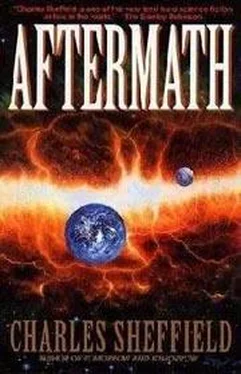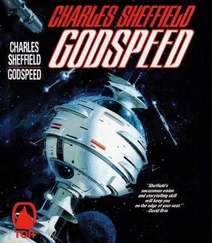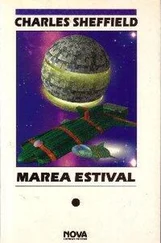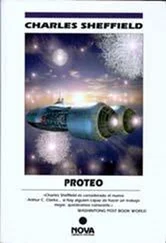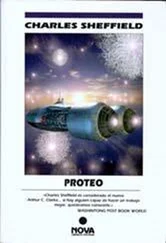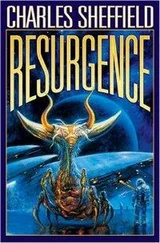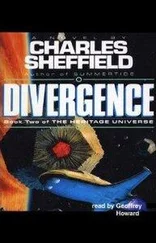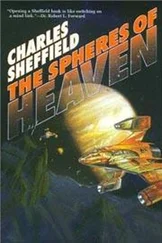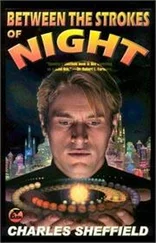“It’s absolutely gorgeous. I’ve seen the aurora before, on transpolar flights. But nothing like this.
“Ahhh!” She had suddenly gasped. Tom came close to doing the same. Overlaid on the trailing wisps of the aurora the whole sky had lit with an intense flicker of blue.
“What is it?” Janet Kloos had been leaning over Tom for a better look at the aurora, but now she sat straight. “It’s everywhere, in front and behind and overhead. What’s causing it?”
Tom did not answer. When the flash of blue came he had felt a tingle through his whole body. In the next moment he thought that he had gone blind. He was staring at the instrument panels, and seeing nothing. At the same moment as he stabbed the controls for a general systems reboot and circuit breaker reset, he heard a warning whir of gyros.
“What is it?” Janet Kloos said again. He noticed a harder note in the Vice President’s voice.
“I don’t know. But we’ve lost the computers, main and auxiliary. I’m trying to bring them back up.”
Trying, and failing. All the lights on the panel and in the cabin had died, that was why he had at first thought that his sight had failed. But lights were not the worst problem. Tom knew every control, even in the dark. He was working the correct switches. The trouble was, nothing responded. Lights would not come on, servos sat lifeless. When he pulled on the control stick it responded sluggishly. It felt as though the hydraulics were working, but every electric amplifier had failed.
The ship was slowly turning, dipping at the nose. Tom knew the cause — there had been a slight forward pitch at the moment when the controls failed, and it was continuing. He would have to correct it manually.
“Can you fly it like this?” Janet Kloos, thank God, had her fear under control. Tom was not sure that he could say the same for himself.
“Sure. But I may need you to take the dual controls and give me a hand. I’m feeling a lot of resistance.”
For the moment that didn’t matter. The problems would start in another few minutes. At that point they would be flying at more than four thousand miles an hour, returning to the atmosphere. The angle for reentry had to be just right. The automatic pilot normally took care of that, but it was dead.
How could it fail, with triply redundant logic and servos at every stage? But it had. The flight had become his responsibility, to work the hydraulic controls himself with no power-assist.
The door in the rear of the cabin opened. “What the hell are you doing up here?” It was a male voice, slightly intoxicated. “You’ve switched all our goddam lights off. Oops.” He was peering at the turned face of Janet Kloos, pale and greenish in the glimmer of the aurora. “Ms. Vice President? I’m sorry. I hadn’t realized that you were on board. Can we get lights back there?”
His smug expression suggested that he had known very well who was in the cabin. He had come forward to complain on a dare or a boast — “See, I went up there, and I told the Veep . . .” He had no idea that there was real trouble.
“Return to your seat, please.” Tom guessed that the seat belt sign was not working, along with everything else. “We have an electrical problem. Tell everyone to buckle up until we’re sure it’s fixed.”
As he spoke he was working the attitude controls, getting a feel for the level of resistance of the mechanical gyros. He could correct their attitude, with a good deal of physical effort. But that was only the beginning. For a landing — any landing, anywhere — he needed engine power. Without thrust the suborbitals had the gliding angle of a lead brick. He had already tried for a preliminary one-second engine burn, without success. He couldn’t ask for ground assistance on possible landing points, because the communications circuits were dead.
The ship’s environment was still close to free fall, but the nose was steadily turning farther downward. Tom hauled on the control to work the gyros and begin to bring them level. As he did so he caught sight of the forward view. The ship had tilted far enough that he could see the Earth beneath. They were past the midpoint of their high arc.
It would be ten o’clock at night below, local time. They should be seeing, even at this altitude, the scattered patches of light that signaled urban development. Tom saw nothing below but total darkness.
“Where are we?” Janet Kloos was working the controls with him. She knew, thank God, exactly what to do. “The last time I looked at the locator display we were over Nebraska.”
The locator display was dead, along with everything else. But Tom understood the implied question. Nebraska still had lots of wide-open spaces where you might not find a city for a hundred miles.
“We’re past Nebraska, ma’am. We’re over Iowa, or maybe Illinois.”
“So where are the cities? There must be a large-scale power failure down there.”
Before Tom could answer — and what could he answer? — a pinprick of bright orange suddenly blossomed below, then as quickly died.
An explosion — of an aircraft, out of control and smashing into the ground at high speed?
In silence, he and Janet Kloos worked the controls together, bringing them back to an even keel. When the angle of attack felt right and he sensed a faint hint of atmospheric lift from the ship’s stubby wings, he turned again to the instrument panels. The computers refused to come back on-line. The communications circuits were dead. There must be plenty of fuel — they had started from LA with full tanks — and the ship’s reactor was presumably still working, since it did not depend on electrical power. But all that became irrelevant when the engines would not fire. The ship was a dead lump of metal and plastic, racing through the upper atmosphere.
Janet Kloos was holding the ship’s angle exactly as Tom had set it. She said, “I’ve never done an un-powered descent. How much speed do you need to avoid a stall?”
Tom’s respect for the Vice President increased. Her thoughts were running on the same lines as his own.
“About four hundred. These suborbitals weren’t designed to glide.”
You could land a ship like this at four hundred. Tom had done it, himself, in training — during daylight, with assistance from the automatic pilot, and with a long, clear runway awaiting his arrival.
It was night, there was no automatic pilot, and the land below was dark and unknown.
Tom thought, We’re going to crash, and I have the Vice President on board. And then, in a flash of grim humor, Vice President? Hell, we’re going to crash with me on board.
The ship was racing down through the atmosphere in its long arc of descent. Tom, with no information except the feel of the controls, guessed that they were already around twenty thousand meters. The buffeting from wind currents was no more than usual, and the faint glow of frictional heating and ionization looked familiar and normal. As the descent continued, that glow faded. It would have been easy to imagine that everything was under control.
Janet Kloos was not fooled. She had released the dual controls. Now she was leaning forward and to the right, staring down at the ground. “Where are you going to put us down?”
The question of the moment. A four-hundred-mile-an-hour landing speed sounded like nothing compared with suborbital speeds ten times that, but a normal touchdown was at less than one-fifty.
“Do you see anything down there?” Tom’s question didn’t sound like an answer to hers, but it was.
“I’m beginning to. The aurora helps. Now that my eyes are used to the darkness, I’m beginning to see outlines.”
And so was Tom. In every test that he had ever taken, his sight had been judged exceptional. Especially in low lighting. Owl eyes, one tester had said. But owls didn’t land at four hundred knots.
Читать дальше
